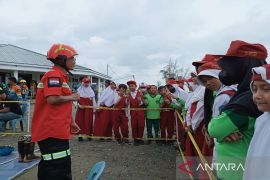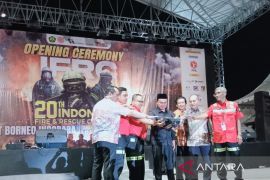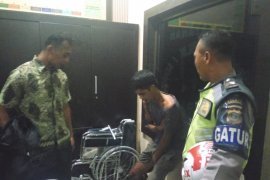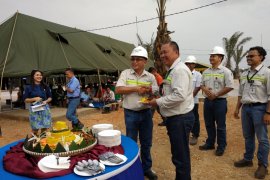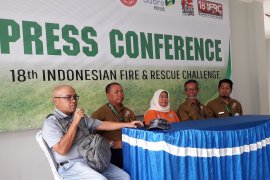Tanjung, (Antaranewa) - Through a radio, a worker at PT Makmur Sejahtera Wisesa (MSW) powerplant area, Tabalong, contacted the command center. He reported his colleague had an incident while checking at the ID Fan location.
The rescue team was immediately sent. Race against time, they must immediately evacuate the victim in location as high as 12 meters from the ground.
Equipment prepared are body harness, carabiner, rigging, pulley to a stretcher to lower the victim.
Quickly, the rescue team climbed the iron staircase while installing carabiners connected to the body harness, on the steps that are passed as safety.
Until they found the victim at the upper had a spinal injury and could not move.
Evacuation is not possible through the stairs and the only way is by lowering through the rope using lowering techniques.
The trajectory of the rope is installed. The victim is put on a stretcher, then lowered. The victim finally arrived below and was taken to the hospital.
The illustration is a scenario in the High Angle Rescue (HAR) challenge at the 2018 Indonesian Fire & Rescue Challenge (IFRC), Tuesday (23/10).
Each team is given a maximum of 30 minutes to climb the area, install a rope trajectory, evacuate the victim, and bring down all the team members back down.
According to one of the assessors in the challenge, Ranauld Korwiranegara, from a technical perspective, the participants also had to pay attention to medical factors in evacuating victims.
In the real world, said Renauld, evacuating victim from high altitude has a high potential danger. Escape a little, it can even increase the number of victims.
"A victim who is injured must be stabilized and fixed properly when placed on a stretcher, especially in the head, neck, and spine," he said.




